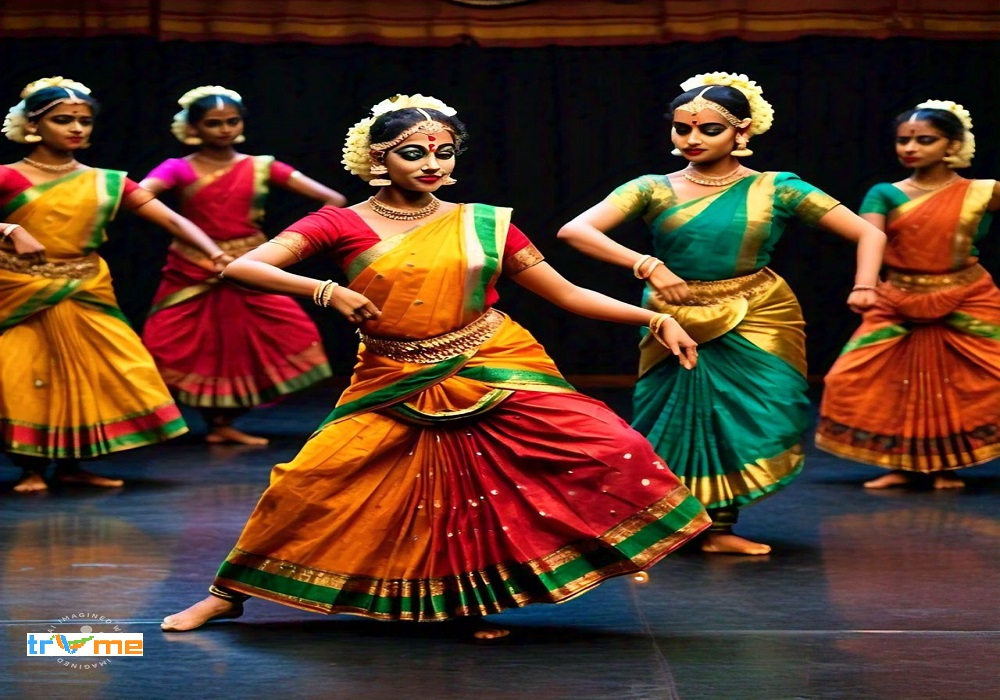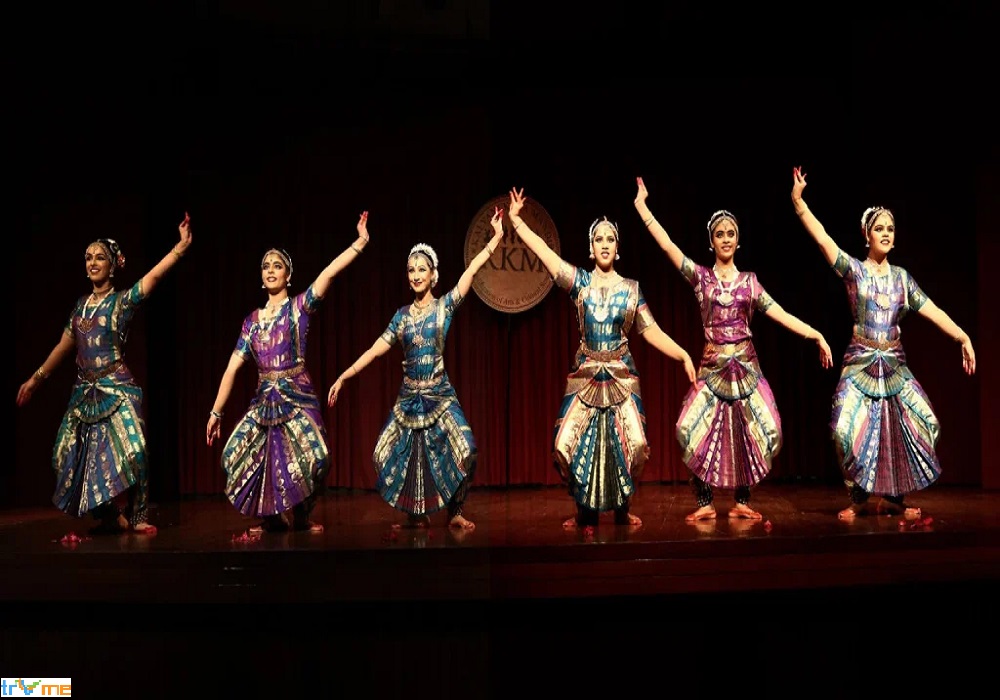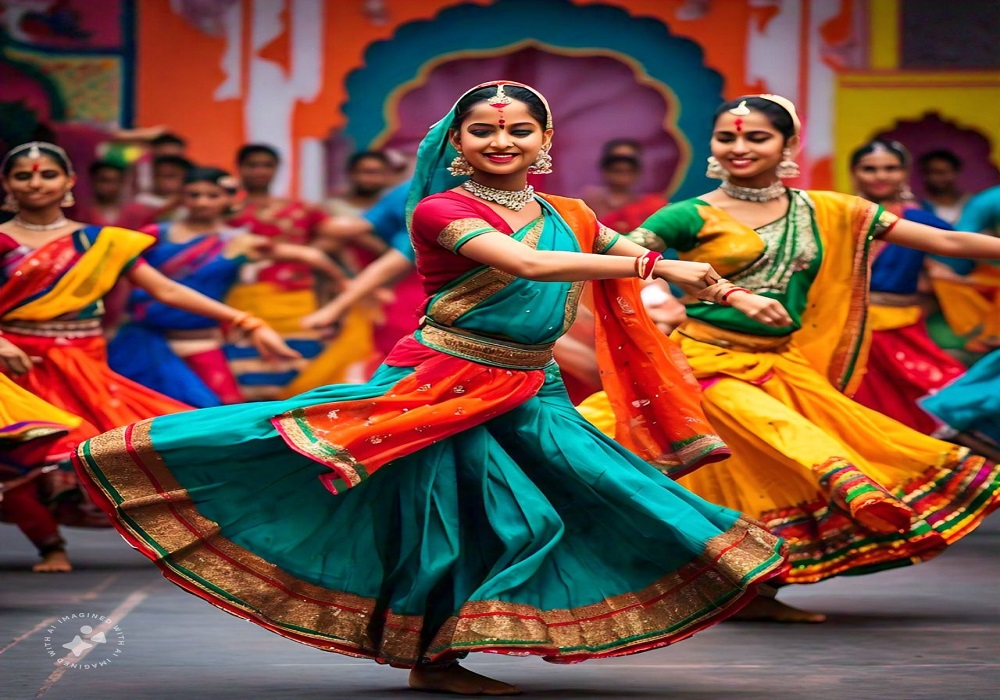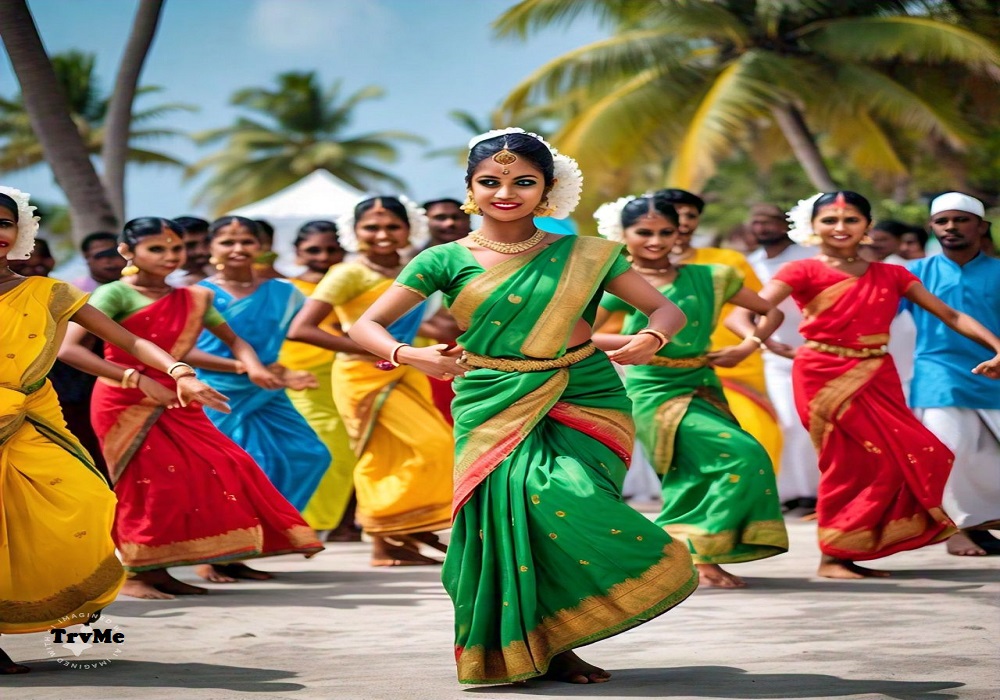Mohiniyattam Dance Group

Published: 16 Sep 2024 • Last Updated: 17 Sep 2024
Mohiniyattam Dance Troupe
Mohiniyattam, often referred to as the dance of the enchantress, is one of the eight classical dance forms of India. Originating from Kerala in the southwestern part of the country, Mohiniyattam is renowned for its graceful movements, fluidity, and subtle yet expressive gestures. The word "Mohini" refers to a celestial enchantress in Hindu mythology, while "Attam" means dance. Thus, Mohiniyattam embodies the essence of beauty and grace, capturing the audience with its ethereal charm.
Characteristics of Mohiniyattam
Mohiniyattam is characterized by its smooth, gliding movements and a focus on Lasya, the feminine aspect of dance. The dance emphasizes gentle, flowing actions, which resemble the swaying of palm trees and the gentle flow of water. This style is less vigorous than some other classical dances like Bharatanatyam or Kathakali, favoring subtle expressions and delicate gestures.
The choreography of Mohiniyattam is built on the foundational principles of Natya Shastra, an ancient Indian treatise on dance and performing arts. It involves intricate footwork, delicate hand gestures (mudras), and expressive facial expressions (abhinaya). The dance is usually performed solo by a female dancer, although it can be adapted for group performances.
Mohiniyattam Dance Troupe
A Mohiniyattam dance troupe typically consists of a group of trained dancers, often led by a guru or a senior dancer. These troupes perform in various cultural festivals, dance festivals, and events around the world, promoting the rich cultural heritage of Kerala. The troupe's performances are accompanied by classical Carnatic music, with traditional instruments like the mridangam, veena, and edakka providing the musical backdrop.
Each member of the troupe undergoes rigorous training to master the intricate movements and expressions of Mohiniyattam. The training emphasizes not just the physical aspects of the dance but also the emotional and spiritual connection, as Mohiniyattam is deeply rooted in the storytelling tradition.
Traditional Costume for Mohiniyattam
The costume for Mohiniyattam is a key aspect of the dance, contributing to its elegance and grace. The traditional attire consists of a white or off-white saree with a golden border, known as "kasavu." This saree is typically draped in a distinctive style that allows for free movement while highlighting the dancer's elegance. The simplicity of the attire is offset by the use of gold jewelry, which adds a touch of opulence.
The dancer's hair is usually styled in a bun on the side of the head, adorned with jasmine flowers. This hairstyle, known as "kondai," is an essential part of the Mohiniyattam look. The makeup is kept minimal, with an emphasis on enhancing the eyes to aid in expressive storytelling.
The overall presentation of the costume, with its understated elegance and gold accents, reflects the traditional aesthetic of Kerala and enhances the graceful movements of Mohiniyattam.
Classical Dance Forms of India
India is home to a rich tradition of classical dance forms, each with its unique style, history, and cultural significance. Mohiniyattam is one among these revered dance forms. Here is an overview of some of the other major classical dances of India:
- Bharatanatyam (Tamil Nadu): One of the oldest classical dance forms, Bharatanatyam is known for its intricate footwork, expressive gestures, and strong narrative component. It is often performed as a solo dance by women and is deeply rooted in the spiritual and religious traditions of Tamil Nadu.
- Kathak (North India): Kathak is a dance form that originated in the temples and courts of North India. It is characterized by its fast footwork, spins, and expressive facial expressions. Kathak performances often tell stories from Indian epics and mythology.
- Kathakali (Kerala): This dance-drama form is known for its elaborate costumes, makeup, and highly stylized movements. Kathakali performances are based on themes from Hindu epics and Puranas and require years of rigorous training.
- Kuchipudi (Andhra Pradesh): Named after the village of Kuchipudi in Andhra Pradesh, this dance form combines fast rhythms with fluid movements and is known for its graceful narrative storytelling.
- Odissi (Odisha): Odissi is one of the oldest classical dance forms, originating from the temples of Odisha. It is known for its sensuous movements, sculptural poses, and intricate footwork.
- Manipuri (Manipur): This dance form from the northeastern state of Manipur is known for its lyrical grace, soft movements, and devotional themes. Manipuri dances often depict scenes from the life of Lord Krishna.
- Sattriya (Assam): Originating from the monasteries (satras) of Assam, Sattriya dance is a devotional dance form performed as an offering to the divine. It is characterized by its elegant movements and spiritual themes.
- Mohiniyattam (Kerala): As already discussed, Mohiniyattam is known for its graceful movements and focus on the feminine aspect of dance. It is a solo dance form that emphasizes Lasya, the graceful and delicate aspect of dance.
Folk and Tribal Dance Forms of India
Apart from the classical dance forms, India is also rich in folk and tribal dances. These dances vary greatly across different regions of the country and are often performed during festivals, weddings, and other community celebrations. Some of the prominent folk and tribal dance forms include:
- Bhangra (Punjab): Bhangra is a lively and energetic dance from Punjab, traditionally performed to celebrate the harvest season. It involves vigorous movements, jumps, and the use of sticks (sapp).
- Garba (Gujarat): Garba is a popular folk dance from Gujarat, performed during the Navaratri festival. Dancers move in circles, clapping and twirling to the rhythm of traditional music.
- Ghoomar (Rajasthan): Ghoomar is a traditional folk dance of Rajasthan, performed by women in colorful attire. The dance involves graceful twirling and swaying movements.
- Lavani (Maharashtra): Lavani is a folk dance form from Maharashtra known for its powerful rhythm and sensuous movements. It is often performed to the beat of the dholki drum.
- Bihu (Assam): Bihu is a folk dance from Assam, performed during the Bihu festival, which marks the Assamese New Year. The dance is characterized by brisk steps, rapid hand movements, and the use of traditional Assamese music.
- Chhau (Odisha, Jharkhand, and West Bengal): Chhau is a martial dance form that combines elements of dance and combat. It is performed during various festivals and involves the use of masks and elaborate costumes.
- Dandiya Raas (Gujarat): Dandiya Raas is a folk dance performed with sticks (dandiyas) during the Navaratri festival. It involves rhythmic and synchronized movements by pairs of dancers.
- Santhali Dance (Tribal Dance, Jharkhand and West Bengal): Santhali dance is performed by the Santhal tribe and is an integral part of their cultural celebrations. It involves synchronized group movements and is usually accompanied by traditional music.
- Kummi (Tamil Nadu): Kummi is a folk dance performed by women in Tamil Nadu. It is characterized by clapping hands in rhythm and moving in circles.
- Karakattam (Tamil Nadu): Karakattam is a folk dance performed with a pot balanced on the dancer's head. It is a part of the rural festivals of Tamil Nadu.
Traditional Costume for Mohiniyattam
The costume for Mohiniyattam is designed to complement the graceful and fluid movements of the dance. It consists of the following elements:
- Saree: The dancer wears a traditional white or off-white saree with a gold border, known as "kasavu." This saree is draped in a unique style that allows for free movement. The gold border symbolizes the traditional Kerala attire, and the white color signifies purity and simplicity.
- Blouse: A matching blouse is worn with the saree, usually in white or off-white to match the saree.
- Ornaments: The dancer wears gold jewelry, including necklaces, bangles, earrings, and a waist belt (ottiyanam). The jewelry adds to the elegance of the costume without overpowering the simplicity of the attire.
- Hair and Flowers: The hair is styled in a bun on the side of the head and decorated with jasmine flowers, adding a delicate fragrance to the performance. The hairstyle, known as "kondai," is a traditional aspect of the Mohiniyattam costume.
- Makeup: The makeup is subtle, with a focus on highlighting the eyes. The eyes are emphasized using kajal to make them more expressive, which is crucial for the abhinaya (expressive) aspect of the dance.
- Ankle Bells (Ghunghroo): The dancer wears ankle bells or ghunghroo to accentuate the rhythmic movements of the feet. The sound of the bells adds to the musical accompaniment, highlighting the footwork of the dance.
Mohiniyattam is a testament to the rich cultural heritage of India, representing the beauty and grace of classical dance. A Mohiniyattam dance troupe showcases this ancient art form through meticulous training, graceful movements, and expressive storytelling. The traditional costume enhances the dancer's elegance, adding to the visual and aesthetic appeal of the performance.
's diverse classical, folk, and tribal dance forms reflect the country's cultural diversity, with each form contributing to the rich tapestry of Indian performing arts. Mohiniyattam, with its enchanting movements and lyrical beauty, continues to captivate audiences, preserving the cultural legacy of Kerala and the broader Indian subcontinent.



